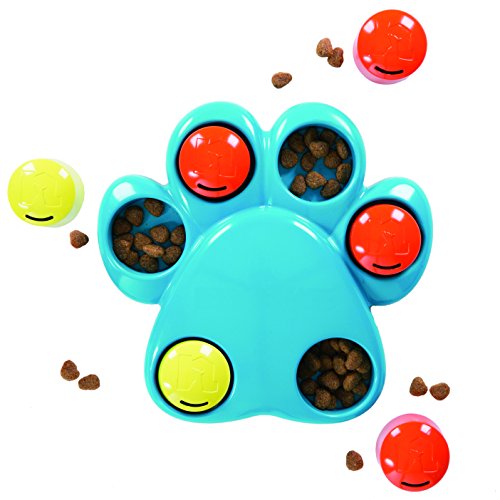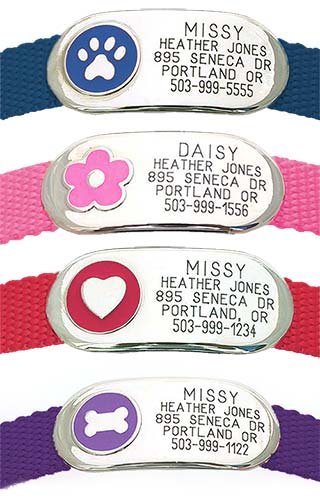
Top 10 Things to Know before Adopting a Dog from a Shelter
Adopting a dog into your family is a wonderful thing to do, and doing it through a shelter may even be saving its life. However, making the choice of which one is right for you and your family has more to it than looking at dogs in their cages and picking the cutest one. An honest analysis of your situation and your future pet's needs will help to ensure that your new companion truly is “man’s best friend”. To avoid unnecessary pain for both you and the pooch, and to ensure the best possible match, give careful consideration to the following top 10 things to know about getting a dog from a shelter.

1. Dogs behave differently in your home than they do in their cage at the shelter.
Within the stressful confines of a shelter, even the most laid-back Lassie can look like a crazy barker, yapping away while jumping up and down. Dogs in a cage, especially those locked up with others, are unlikely to be putting their best paw forward, especially if you come to visit during hectic peak hours at the weekend. If you see a dog that interests you, ask to take it to a separate area where you can spend some time together without interruptions from other dogs and prospective adopters. Sit quietly with the dog, limiting your interaction with it, to give both of you the opportunity to feel each other’s presence. Remember that a dog’s energy level is probably more important than its physical size when considering how it will fit in at its new home. Some large breeds, like a Bullmastiff can easily weigh 100 pounds, but have low energy and require relatively little exercise. On the other hand, a sausage-shaped Dachshund, although small, is likely to have the energy levels of an Olympian! The more time you can spend with your prospective adoptee, the more likely you are to find a good match. Taking canine companions for short walks should also tell you a lot about their behavior. One strategy for seeing a dog on two separate occasions with very little risk of losing out to another potential owner is to visit a shelter late on a weekday, being with “your” dog at closing time and then returning first things the next morning for another visit. If the vibe is good both times, you have found yourself a friend for life. If not, you have saved yourself and Buster from future heartbreak.
2. Dogs in shelters may have illnesses.
Dogs in shelters come from all sorts of backgrounds which may have been conducive to a variety of health problems. Also, despite the best attempts of shelters, having several animals living in such close proximity means that they may be able to infect each other with preexisting problems. Ask at any shelter you’re visiting what illnesses their vets screen for. Make sure that heartworm is on this list as it can be fatal if left untreated and treatments run into the thousands of dollars. Some shelters screen for heartworm and offer the treatment for free. If this is the case for a dog that you’re falling in love with, be aware that the treatment involves a series of injections and a need for near complete rest for approximately two months, meaning no jogs, Frisbee games, swimming or even brisk walks. Some dogs have intestinal parasites that may lead to diarrhea. Even a change in habitat, along with a change in food can lead to this problem. It is important to be aware of this possibility so that a canine's entry into your home isn’t met with shock and horror if accidents occur.

3. Even if they have been housetrained, they may develop bad habits at the shelter.
Speaking of “accidents”, even well trained dogs may have lost their good toileting habits during their time in a shelter. Although shelter workers do their best to meet the needs of their canine visitors, exercise sessions are unlikely to be timed to the needs of each specific dog. Fido can only refrain from doing his business for so long, and he will soon learn that leaving his little care packages on the floor of his cage do not result in anyone’s displeasure. Even the best trained dog can lose his sense of discipline under these conditions. It is therefore important for the new owner to understand that a dog described as “housetrained” may need to be “retrained” to a certain degree. Again, being aware and prepared, mentally as well as physically, can keep you loving your dog through the first difficult and sometimes messy weeks.
4. Dogs from shelters are often well socialized.
A real positive point about dogs in shelters is that they have become used to spending a lot of time with other dogs and you will be able to see them interacting with others. If a dog has an issue with other dogs or with children, there will normally be a note about that in their file. If you see that a particular dog is being kept alone, you can ask the employees if it’s a coincidence or if he needs to be away from others. Many shelters also “cat test” their residents to know if they are friendly with the felines. This is a great service as it would be a real shame to take home the lovely Ginger, only to find out that she simply cannot share an abode with your playful Siamses.
5. Dogs from shelters may have a “past”.
Some shelter dogs have a full bio in their file with detailed reasons around why they were turned over to a shelter. A dog that had been living with an older owner who passed away may have been the most loyal and trusted companion ever and simply needs a new family to love. Sadly, other dogs may have been mistreated, either out of cruelty, neglect or by well-meaning but inexperienced owners who were unable to meet the needs of their pet. The worst cases will be evident to the shelter who will come across dogs with injuries or those who have been trained to fight. However, some scars are less visible, such as dogs with particular fears that may not be evident until it has integrated into your family. Some may be afraid of cars, loud noises, or of being separated from their new owner. Although initial visits will give you a lot of information about the possibilities for a connection between you and your dog, surprises may be around the corner.

6. Dogs from shelters (just like all dogs) require a lot of time and effort.
Of course, all dogs require a lot of time and effort and some compare the entry of a new pup into the household with the arrival of a new baby. Schedules change depending upon when Gizmo is fed, exercised and groomed, time is needed for training, and most owners at one point or another find themselves in the cleaning aisle of the supermarket or pet store looking for a way to finally put an end to the smell left by Gizmo's “marking” of his new territory. Going on vacation now involves finding transport options and hotels that are pet friendly or the added expense of boarding. On top of that is the time and money spent on obedience classes, collars, leashes, food and veterinary bills. All in all, it is amazing that humans are willing to take on so much responsibility to add a dog to the family. Make sure that the love and companionship of a dog means enough to you and your family to make all these sacrifices acceptable. No one wants to have a pet that they resent due to the expenses in time, energy and cold hard cash that come along with the ride.
7. Dogs from shelters can be returned (sometimes).
Just as with human adoptions, sometimes animal adoptions break down. Although this is often due to pet owners who were not prepared for the responsibility of dog ownership, it can also happen that circumstances beyond anyone’s control lead to the need to return Benji to the shelter. If you want to be prepared for this possibility, you should consider working with a no-kill shelter when you choose your dog. No-kill shelters promise not to kill any animal for any reason, even if it is nearly impossible that the animal will ever be adopted. When adopting from a no-kill shelter, make sure to ask them whether your dog would be able to be returned under their no-kill policy if the worst case scenario arrived and you could no longer give your pet the care they needed. This will give you the peace of mind that Benji will always have a home with food, shelter and healthcare should the need arise. This in no way means that adopting a dog can be seen as a try-out of a pet which can be returned. Adoption is a commitment for the lifetime of the animal, but a no-kill shelter may be the best option for many in case of a total adoption breakdown.
8. Dogs from shelters often age better than purebred dogs from breeders.
Although some purebred dogs are turned over to shelters, the majority are lovable mutt mixes. Despite the initial chances of adopting a dog that needs some health maintenance, in the long term, mutts often do better health-wise than their purebred counterparts. Purebreds are often derived from a very limited genetic pool, leading to inbreeding and associated health difficulties.

9. Dogs from shelters are just as loving as any other dog.
Anyone who has ever spent some quality time with a dog, whether it be a prize-winning purebred or an adorable mutt, knows that they have been so popular with humans for centuries not only for their abilities as work animals, but because they are pure love. Who doesn't want an adoring furball to meet them at the door excitedly every time they come home and to provide them with unconditional love and companionship?
10. Dogs from shelters truly need you.
Dogs in shelters are truly in need of loving homes where they will be safe, well cared for and hopefully cherished. When considering caninces in need, this is another time to consider the difference between kill and no-kill shelters. Dogs that you save from a kill shelter will likely be put down if they're not adopted. This will be a reason for many people to adopt from this type of shelter. However, if you need to bring Goldie back for any reason, the odds are high that she will be killed. Adopting from a non-kill shelter, on the other hand, may give some peace of mind, knowing that they can bring their animal back to a relatively safe environment if needed. Many also like the idea of supporting no-kill shelters. Whatever your decision, being well informed of your options greatly improves the chances of having a successful relationship with your new best friend.
 Pet Dog Supplies - To Keep Your Pet Dog Happy
Every pet has their own individuality, especially dogs.
Pet Dog Supplies - To Keep Your Pet Dog Happy
Every pet has their own individuality, especially dogs.
 13 Unusual Things You Didnt Know Your Dog Really Enjoys
There are a lot of things th
13 Unusual Things You Didnt Know Your Dog Really Enjoys
There are a lot of things th
 Name Tags for Dog Collars
For most people, our dogs ar
Name Tags for Dog Collars
For most people, our dogs ar
 Disadvantages Of Dog Boarding Solutions Online
When you possess a canine, everyday could seem like a holid
Disadvantages Of Dog Boarding Solutions Online
When you possess a canine, everyday could seem like a holid
 Pro Select Empire Cages
Crate training a dog is a go
Pro Select Empire Cages
Crate training a dog is a go
Copyright © 2005-2016 Pet Information All Rights Reserved
Contact us: www162date@outlook.com